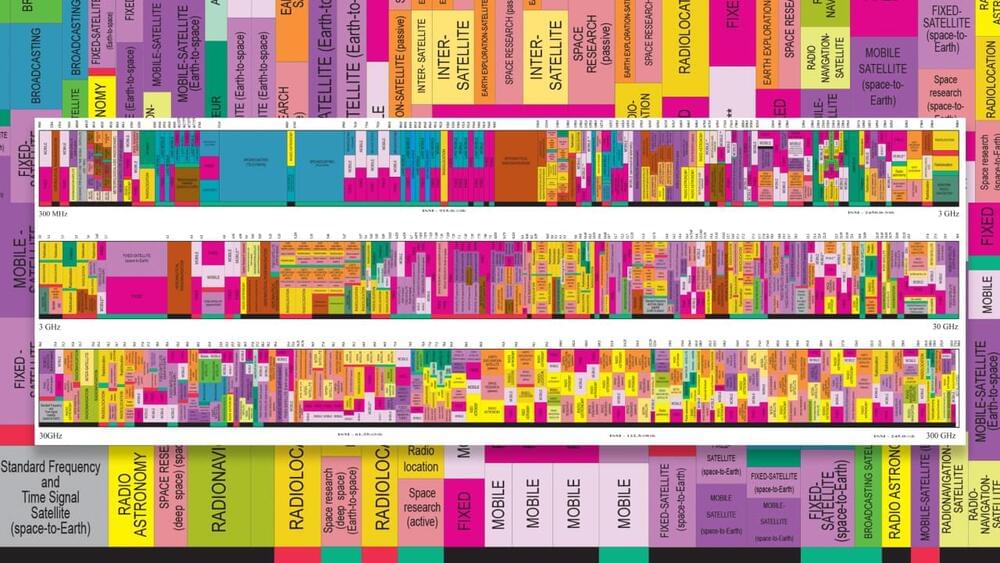The free-to-access IoT network could help bring billions of connected devices online — if you’re willing to share.




Play EVE Online: https://eve.online/Ridddle_EN
In this video, we explore the fascinating prospects of humanity becoming a proper interstellar civilization, up to Type III on the Kardashev scale. However, this transition process presents our species with a bunch of physical limitations, as well as societal and even biological implications. Many of them are quite unwanted or even ugly! We explore this vast topic by using the latest scientific models as well as the best science fiction worlds from books, TV shows, and even games. Speaking of which, to help us visualize this space-faring future with much-needed scale and fidelity, we turned to CCP Games — the creators of the massively multiplayer online game EVE Online. https://eve.online/Ridddle_EN. It is set in a rich sci-fi universe, where players can create their own character and explore a vast and complex virtual world built according to the well-thought set of consistent in-world rules The game is known for its intricate economy, politics, and warfare mechanics, where players can engage in a variety of activities, including mining resources, trading, building structures, and participating in battles. Quite frankly, the game feels like a real simulation of all those future endeavors humanity will face on the way to becoming a true interstellar species!
Deep Learning AI Specialization: https://imp.i384100.net/GET-STARTED
AI Marketplace: https://taimine.com/
Take a journey through the years 2023–2030 as artificial intelligence develops increasing levels of consciousness, becomes an indispensable partner in human decision-making, and even leads key areas of society. But as the line between man and machines becomes blurred, society grapples with the moral and ethical implications of sentient machines, and the question arises: which side of history will you be on?
AI news timestamps:
0:00 AI consciousness intro.
0:17 Unconscious artificial intelligence.
1:54 AI influence in media.
3:13 AI decisions.
4:05 AI awareness.
5:07 The AI ally.
6:07 Machine human hybrid minds.
7:02 Which side.
7:55 The will of artificial intelligence.
#ai #future #tech

One question for David Krakauer, president of the Sante Fe Institute for complexity science where he explores the evolution of intelligence and stupidity on Earth.
Does GPT-4 really understand what we’re saying?
Yes and no, is the answer to that. In my new paper with computer scientist Melanie Mitchell, we surveyed AI researchers on the idea that large pretrained language models, like GPT-4, can understand language. When they say these models understand us, or that they don’t, it’s not clear that we’re agreeing on our concept of understanding. When Claude Shannon was inventing information theory, he made it very clear that the part of information he was interested in was communication, not meaning: You can have two messages that are equally informative, with one having loads of meaning and the other none.
The unique radiation emitted by heated or electrified elements has been converted into sound, enabling us to hear the distinctive chord each element produces. Although the idea has been tried before, advances in technology have now made it possible for a far more complete and subtle sonification of the periodic table.
When elements are energized electrons can jump to higher energy levels. Eventually, they return to their ground state, releasing a photon in the process. The wavelength of the photon depends on the size of the energy gap between the excited state and the ground state – more energy produces higher frequency/shorter wavelength light.
The discovery of this fact has proven crucial for our understanding of the universe. We can identify the elements in a star billions of light-years away from the distinctive wavelengths it emits, known as its emission spectra. At the American Chemical Society’s Spring Conference over the weekend, the University of Indiana’s W. Walker Smith demonstrated the result if every element’s electromagnetic spectrum is converted to sound.

The Twilight Zone (1985) is a television science fiction anthology series. It recreated some of the episodes from the original series and created some new ones too. The series contains ironic or special situations with a twist at the end, which show the human nature, coupled with science fiction, horror or fantasy. This new series included such famous directors as Wes Craven, Joe Dante, John Milius, and William Friedkin along with writers such as Stephen King, Harlan Ellison, Roger Zelazny, J. Michael Straczynski, Rockne S. O’Bannon, Theodore Sturgeon, Ray Bradbury, George Clayton Johnson, and even an original outline by Rod Serling.
Facebook Page:
https://www.facebook.com/TheTwilightZone1985
Ambassador Dr. John-Arne Røttingen, MD, Ph.D. (https://www.bsg.ox.ac.uk/people/john-arne-rottingen) is Ambassador for Global Health, at the Ministry of Foreign Affairs, Norway, and a Visiting Fellow of Practice, at the Blavatnik School of Government, Oxford University.
Ambassador Dr. Røttingen has previously served as the Chief Executive of the Research Council of Norway; the founding Chief Executive Officer of the Coalition for Epidemic Preparedness Innovations (CEPI); Executive Director of Infection Control and Environmental Health at the Norwegian Institute of Public Health; founding Chief Executive of the Norwegian Knowledge Centre for the Health Services; Professor of Health Policy at the Department of Health Management and Health Economics, Institute of Health and Society, University of Oslo; and Adjunct Professor at the Department of Global Health and Population, Harvard T.H. Chan School of Public Health.
From 2020, Ambassador Dr. Røttingen also chaired the Executive Group and the International Steering Committee of the WHO Solidarity trial to compare four untested treatments for hospitalized people with severe COVID-19 illness. In early 2021, he was appointed by the G20 to the High Level Independent Panel (HLIP) on financing the global commons for pandemic preparedness and response. That same year, he was also appointed to the Pandemic Preparedness Partnership (PPP), an expert group chaired to advise the G7 presidency. From mid-2021, he was part of the Access to COVID-19 Tools Accelerator’s Vaccine Manufacturing Working Group.
Ambassador Dr. Røttingen received his MD and Ph.D. from the University of Oslo, an MSc from Oxford University and an MPA from Harvard University.